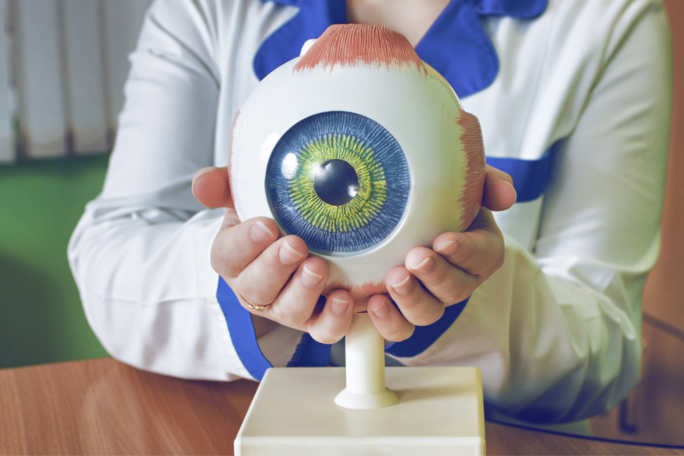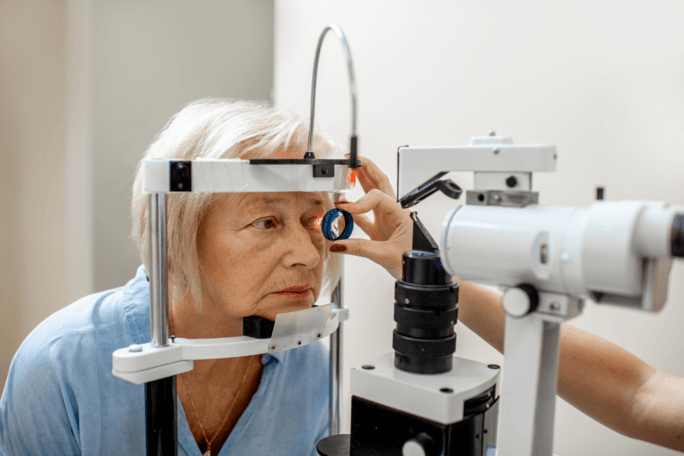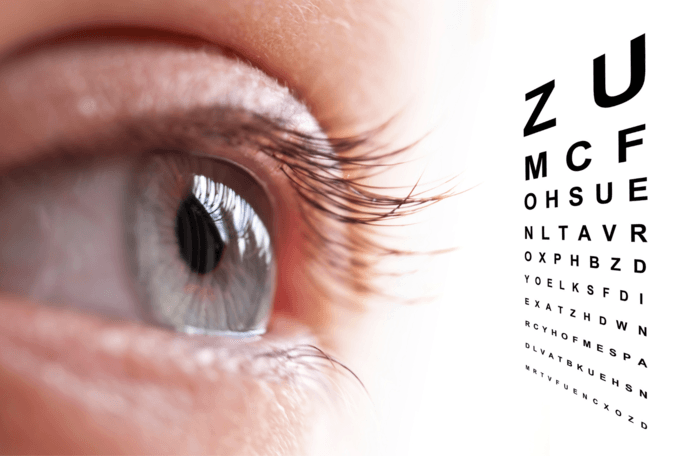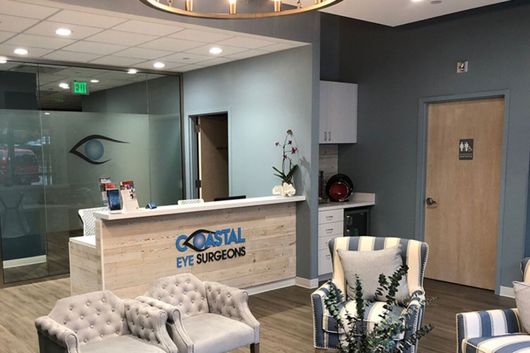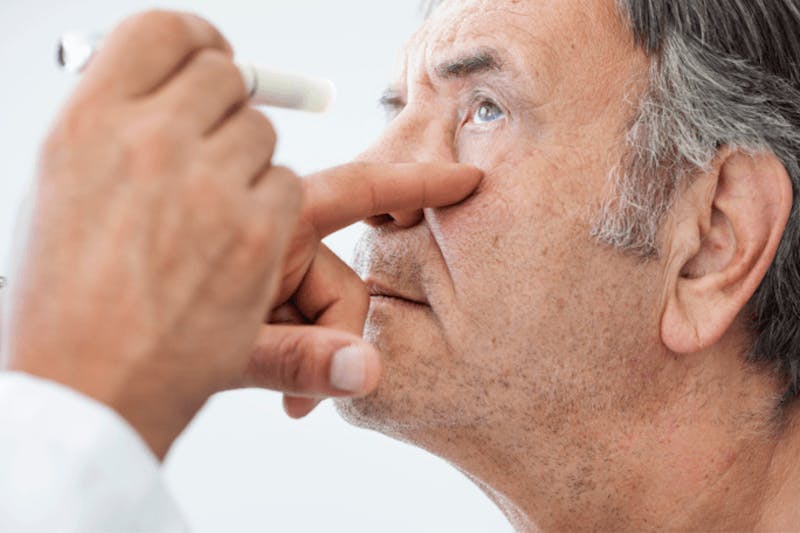
Glaucoma is an eye disease that damages the optic nerve, which is the main communication line between the eye and the brain. It’s caused by an excess amount of fluid -- known as aqueous humor -- in the front of the eye, which increases the amount of pressure in the eye.
Aqueous humor is supposed to flow into the eye at the same rate it drains out of the eye via the drainage angle. If the drainage angle isn’t functioning properly, fluid piles up, eye pressure builds, and it causes damage to the optic nerve -- eventually leading to vision loss or impairment.
In fact, glaucoma is the leading cause of vision loss or blindness in people over the age of 60. While there is no cure for glaucoma, it can be treated if detected early enough. That’s why it’s so important that everyone understands the early warning signs and symptoms of glaucoma.
So, What Is The First Sign of Glaucoma?
The first sign of glaucoma is often vision loss -- generally to your peripheral vision, which is also known as side vision or tunnel vision. If you start to notice vision impairment around the edges of your visual field, you should schedule an appointment with your eye doctor immediately.
Although losing your vision is one of the first signs of glaucoma, it generally means glaucoma has already entered the advanced stages -- making it more difficult to treat. In fact, most patients with glaucoma won’t experience any early warning signs at all -- until it’s too late.
This is especially true with the most common type of glaucoma, open-angle glaucoma,. That’s why regular eye exams with your eye doctor are so important to detecting this disease. They have the equipment necessary to detect, diagnose, and treat glaucoma in its earlier stages.
Other Symptoms & Early Warning Signs of Glaucoma
To recap what we’ve learned thus far, vision loss is generally the first warning sign of glaucoma, but a trip to the eye doctor could detect it even sooner. The best case scenario is for the eye doctor to detect glaucoma before the patient experiences any vision loss or vision impairment.
That should answer the main question here, “What is the first sign of glaucoma?”
With that said, there are other early signs of glaucoma that patients should be aware of. A majority of these signs and symptoms depend on the type of glaucoma. The two most common types of glaucoma include open-angle glaucoma and acute angle-closure glaucoma.
Some of the early signs of open-angle glaucoma include:
- Blind spots in your peripheral or central vision
- Tunnel vision (generally in advanced stages)
Some of the early signs of angle-closure glaucoma include:
- Severe headaches
- Nausea and vomiting
- Eye pain or redness
- Blurred vision
- Seeing halos around lights
In addition to those symptoms, there are several risk factors. Some of the most common include having a family history of glaucoma, having high intraocular pressure, certain medical conditions, eye injuries, and refractive errors. Those over the age of 60 are also at a higher risk.
Diagnosing Glaucoma With an Eye Exam
Developing glaucoma can be a scary experience for anyone, especially when it’s diagnosed in its later stages. Luckily, those that get regular eye exams can reduce their chances of catching it too late. For those that are at a higher risk, you may want to schedule frequent eye exams.
Before your eye doctor starts your eye exam, they’ll review your medical history and see if you have a family history of glaucoma. They will generally ask you a series of questions to get a better feel for who you are, your overall eye health, and any other medical conditions you have.
The exam includes several tests that measure intraocular pressure (tonometry), optic nerve damage (imaging), vision loss (visual field test), corneal thickness (pachymetry), and the health of your drainage angle (gonioscopy). Problems in these areas are the true early warning signs.
How to Treat Glaucoma
Glaucoma is best treated when diagnosed in its early stages. While there’s no cure for this eye disease and damage can’t be reversed once detected, there are treatment options that can help prevent future vision loss or, at the very least, slow the rate of vision loss or impairment.
The main goal in treating glaucoma is reducing the pressure inside the eye -- remember, high pressure in the eye is the main cause of glaucoma. There are three main treatment options -- eye drops, oral medication, and surgery. Let’s take a closer look at each one:
- Eye Drops - eye drops are designed to lower eye pressure. The common prescription eye drops utilized include prostaglandins, beta blockers, alpha-adrenergic agonists, carbonic anhydrase inhibitors, rho kinase inhibitors, and miotic or cholinergic agents.
- Oral Medication - when eye drops don’t bring the eye pressure down, oral medication is usually the next option, though they usually come with potential side effects. A carbonic anhydrase inhibitor is generally what’s utilized here.
- Surgery - the most common types of surgery for glaucoma include laser therapy, filtering surgery, drainage tubes, and minimally invasive glaucoma surgery (MIGS). They are designed to improve the drainage of fluid in the eye.
In the event you’re diagnosed with acute angle-closure glaucoma, you’ll need immediate medical attention -- it’s considered a medical emergency. It’ll usually require a combination of medication and surgery to immediately lower eye pressure and maintain it in the future.
Contact Your Local Ophthalmologist Today!
By now, we’ve answered the burning question of the hour -- “What is the first sign of glaucoma?” -- as well as some of the other signs, how glaucoma is diagnosed, and how it’s treated.
If you’re concerned about your eye health, are at a high risk of glaucoma, or haven’t scheduled a comprehensive eye exam in a while, you’re certainly due for a visit with your eye doctor. The sooner you schedule an appointment, the sooner they can diagnose potential vision problems.
Don’t worry, you can trust Coastal Eye Surgeons to stand by your side through thick and thin. Dr. Omar Shakir takes great pride in helping his patients lead a happy, healthy, and prosperous life with quality vision. Dr. Shakir and his team have some of the most superior glaucoma service's and treatments around!
Contact us today to schedule an eye exam with your new favorite doctor!
Learn more about What Is the Difference Between LASIK and Cataract Surgery?

